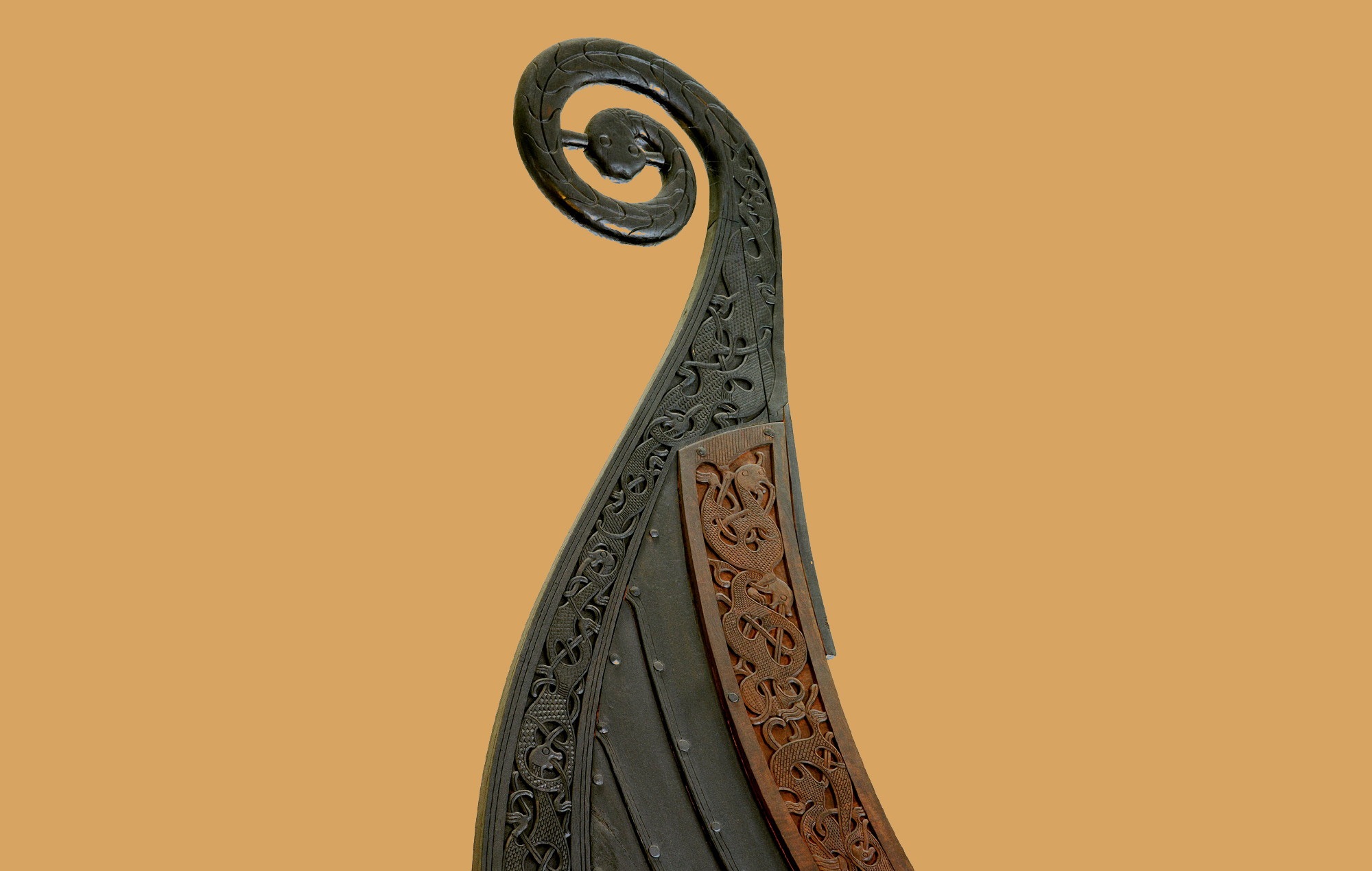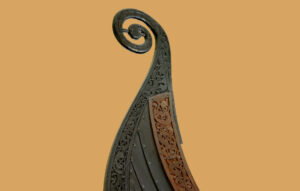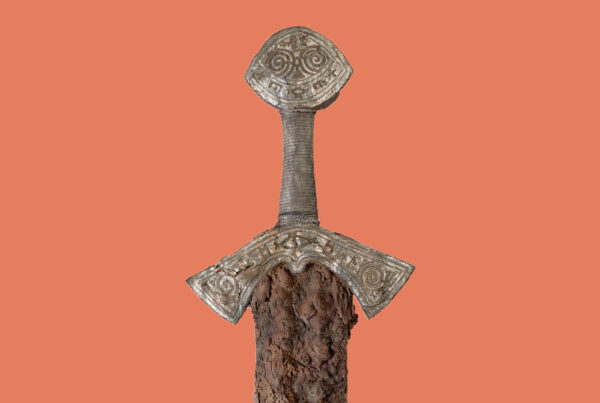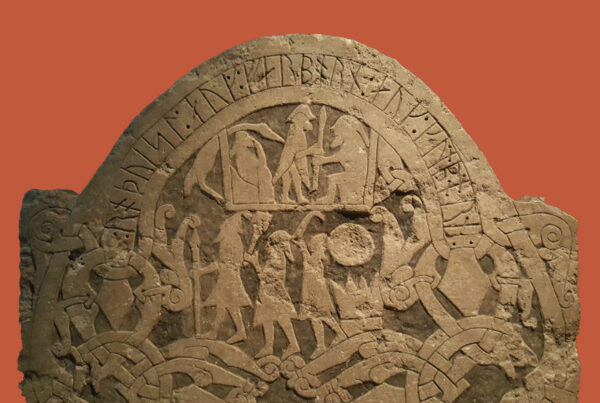Se vuoi scoprire la vera storia delle navi vichinghe, sei nel posto giusto.
La parola drakkar è un termine inventato dai posteri, che per la sua semplicità e sonorità, è rimasta nella cultura popolare per definire le navi vichinghe.
Gli antichi scandinavi, abilissimi navigatori, disponevano invece di diversi tipi di imbarcazione e nessuna di queste era chiamata in questo modo.
Per citarne alcune, abbiamo: herskip (nave da guerra), langskip (lunga imbarcazione), kaupskip (nave mercantile), knǫrr, skúta, ecc.
E talvolta posizionavano meravigliosi intagli di teste di animali alla prua.
In una saga, la nave di re Oláfr Tryggvason viene definita “dreki” dato che porta un serpente mostruoso come polena. Ed ecco l’errore! Dalla storpiatura di una metafora poetica, dreki diventa drakkar ed entra nella cultura di massa… tanto da comparire grottescamente in testi di canzoni, titoli di libri e addirittura in nomi di eventi!
Curiosità: le polene dovevano terrorizzare i nemici ma erano removibili perché andavano tolte nei pressi delle proprie coste per non spaventare gli spiriti guardiani “landvættir”.
È affascinante approfondire una cultura e scoprire quanto in realtà sia molto più interessante e ricca, rispetto alle poche e superficiali nozioni che vengono erroneamente divulgate.
Se vuoi saperne di più, contattaci! Diventa membro del Visundr e potrai accedere alla nostra smisurata biblioteca digitale!
If you want to discover the true history of Viking ships, you’re in the right place.
The word drakkar is a term invented by later generations. Because of its simplicity and striking sound, it stuck in popular culture as a way to refer to Viking ships.
But the ancient Scandinavians—expert seafarers—had various types of ships, and none of them were called drakkar.
To name just a few, there were: herskip (warship), langskip (long ship), kaupskip (merchant ship), knǫrr, skúta, and others.
Sometimes, they would place beautifully carved animal heads at the prow.
In one saga, King Óláfr Tryggvason’s ship is referred to as a dreki, because it bore a monstrous serpent figurehead. And here’s where the mistake begins! A poetic metaphor was distorted: dreki turned into drakkar, and eventually made its way into mass culture… grotesquely appearing in song lyrics, book titles, and even event names!
Fun fact: figureheads were meant to terrify enemies, but they were removable—sailors would take them down when approaching their own shores, so as not to frighten the guardian spirits known as landvættir.
It’s fascinating to delve into a culture and realize how much richer and more interesting it truly is, compared to the few shallow notions often spread by mistake.
If you want to learn more, get in touch! Become a member of Visundr and gain access to our vast digital library!
